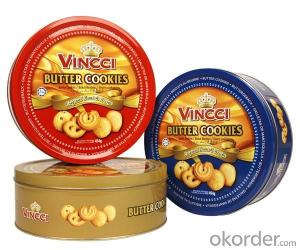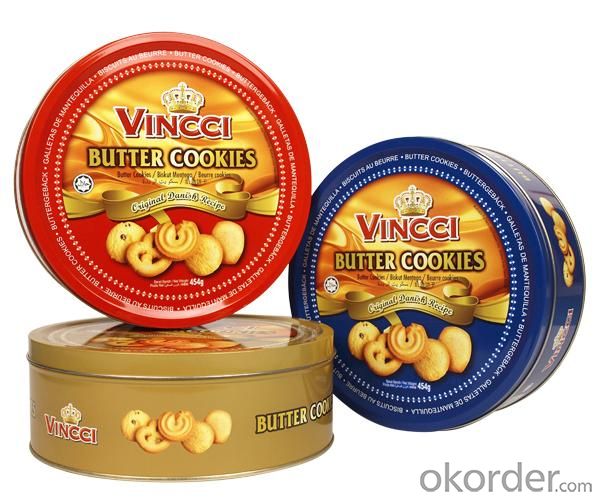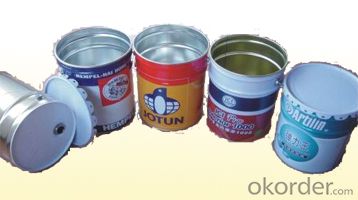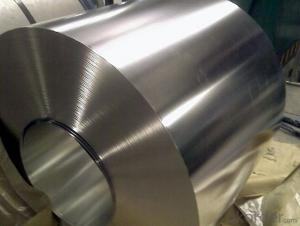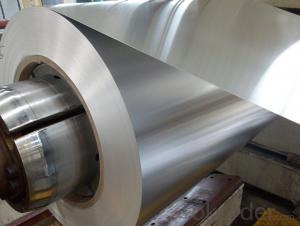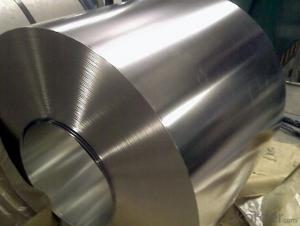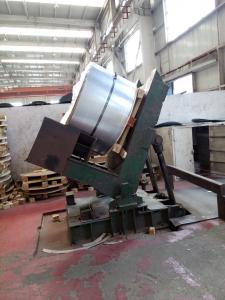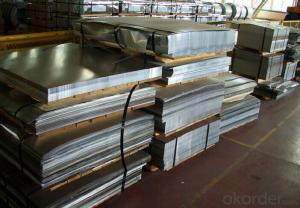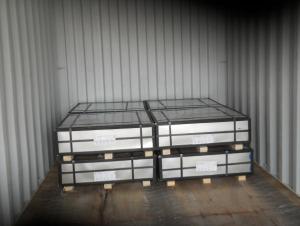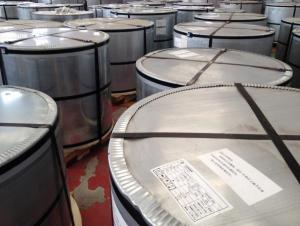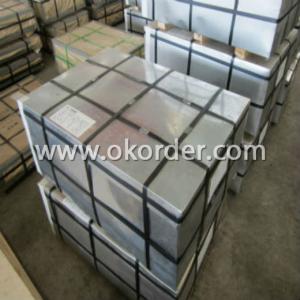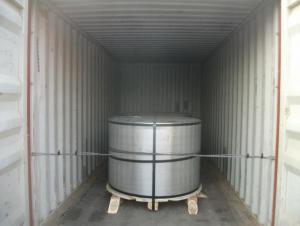Tinplate For Cookie Can, EN 10202, Printed Tinplate
- Loading Port:
- Tianjin
- Payment Terms:
- TT OR LC
- Min Order Qty:
- 25 m.t.
- Supply Capability:
- 30000 m.t./month
OKorder Service Pledge
OKorder Financial Service
You Might Also Like
1.Usage
Tinplate is widely used for making all types of containers, containing industrial usage such as paint can, oil can, aerosol cans etc., and food cans like milk powder cans, tomato paste can, dry food cans etc.
2. Quality
As a state owned company and a large tinplate supplier in China, our tinplate quality ranks 1st level in China, similar to Bao Steel, Posco etc.
3. Specification
standard: GB/T2520, JIS G3303, DIN EN10202
Material: MR /SPCC
Thickness available: 0.16-0.50MM
Width available: 600~1050MM
Temper grade: T1 – DR8
Tin coating: ordinary 2.8g/2.8g, 5.6g/5.6g and others
Package: sea worthy export package.
Applications: Tin can for chemicals & paint cans, industrial cans, food cans
4. Our factory photo & equipments

5. Our Markets:
now our tinplate has been sold to more than 50 countries, including Europe country, Gulf Area, South American, South Afric etc.
6. Our Overseas Wareouses:
Furthermore, in the year 2014, we have more than 10 overseas warehouses all over the word, located in KSA, UAE, Oman, Russia, Kuwait, Qatar, Oman, Chile, Brazil etc.
7. FAQ
a. what's the annual output?
about 500,000 tons per year.
b. where's the raw matrial from?
our hot rolled coil is purchased from Capital Steel and other state owned mill, with quite good quality.
c. how long is the delivery time?
normally for SPCC about 45~55 days, while 65~75 days for MR material
d. how to control the quality during production process?
inside our workshop, we have MES syestem. It realizes the optimization of the production procedure in the workshop. It could record each step of the whole production procedures, and if some problem appears, factory could easily found and take action, it’s quite helpful to monitor and control the quality.
- Q: Can tinplate packaging be used for automotive products?
- Yes, tinplate packaging can be used for automotive products. Tinplate is a durable and corrosion-resistant material, making it suitable for protecting automotive components such as spare parts, lubricants, and chemicals. Additionally, tinplate packaging can be customized to meet specific requirements, ensuring the safe transportation and storage of automotive products.
- Q: How is tinplate coated for paint cans?
- Tinplate is coated for paint cans using a process called electrolytic tin coating. This involves immersing the tinplate in an electrolyte solution and passing an electric current through it. The current causes tin ions to be deposited onto the surface of the tinplate, creating a thin layer of tin coating. This tin coating provides the necessary corrosion resistance and ensures the paint cans remain durable and long-lasting.
- Q: What are the quality control measures for tinplate production?
- Quality control measures for tinplate production typically involve a combination of inspections, tests, and process controls. These measures include visual inspections to check for defects like scratches, dents, or uneven coating, as well as dimensional checks to ensure the tinplate meets specified thickness and width requirements. Additionally, chemical composition analysis is often performed to verify the tinplate's composition and adherence to standards. Coating adhesion and corrosion resistance tests are also conducted to ensure the tinplate's durability. Overall, quality control measures aim to ensure that tinplate production meets the desired quality standards and customer requirements.
- Q: What are the main applications of tinplate in the aerospace industry?
- Tinplate is primarily used in the aerospace industry for manufacturing various components, such as fuel tanks, containers, and protective casings. Its corrosion resistance properties make it ideal for safeguarding against moisture and ensuring the longevity of these critical aerospace components. Additionally, tinplate's lightweight nature contributes to the overall weight reduction of aircraft, enhancing fuel efficiency and performance.
- Q: Can tinplate packaging be used for electronic products?
- Yes, tinplate packaging can be used for electronic products. Tinplate offers excellent protection against moisture, corrosion, and physical damage, making it a suitable choice for packaging sensitive electronic components. Additionally, tinplate can be easily shaped and printed upon, allowing for customizable designs and branding opportunities.
- Q: How does the tin coating affect the weldability of tinplate?
- The tin coating on tinplate improves the weldability of the material. It acts as a protective layer, preventing oxidation and promoting better adhesion during the welding process. This ensures a stronger and more reliable weld.
- Q: You can do is tin iron electromagnet
- There are other statements, such as China used this lamp tin plate made of kerosene, shaped like a horse, so called "tin". The name "tinplate" is not exact. Therefore, in 1973, when the Chinese tin plate meeting was called "tinplate", the official document no longer used the name "tinplate".
- Q: How does tinplate affect the overall product tamper-evident features?
- Tinplate enhances the tamper-evident features of a product by providing a strong and durable packaging material. Its rigidity and resistance to punctures or tampering make it difficult for unauthorized access or tampering. Additionally, tinplate can be sealed tightly, ensuring that any attempt to open the product is easily detectable. Overall, tinplate plays a crucial role in enhancing the tamper-evident features of a product, ensuring its integrity and safety.
- Q: What are the main challenges in tinplate supply chain management?
- The main challenges in tinplate supply chain management include ensuring a steady and reliable supply of tinplate, managing fluctuations in demand and supply, coordinating multiple stakeholders in the supply chain, optimizing transportation and logistics, ensuring product quality and compliance with regulations, and mitigating risks such as price volatility and disruptions in the supply chain.
- Q: How does tinplate perform in terms of corrosion resistance?
- Tinplate performs exceptionally well in terms of corrosion resistance due to the protective layer of tin that prevents the underlying steel from coming into contact with corrosive elements such as moisture and oxygen.
Send your message to us
Tinplate For Cookie Can, EN 10202, Printed Tinplate
- Loading Port:
- Tianjin
- Payment Terms:
- TT OR LC
- Min Order Qty:
- 25 m.t.
- Supply Capability:
- 30000 m.t./month
OKorder Service Pledge
OKorder Financial Service
Similar products
Hot products
Hot Searches
Related keywords
